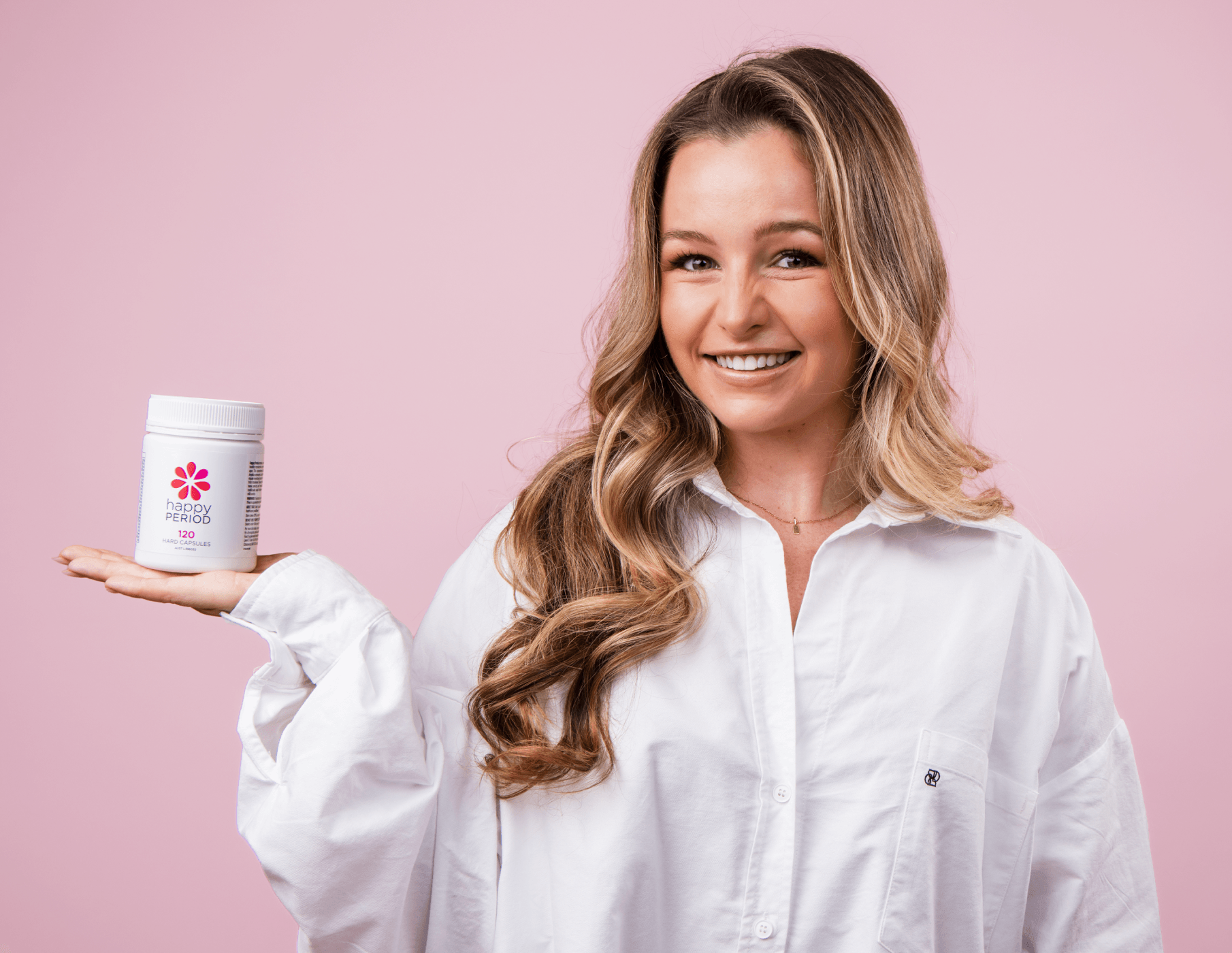5 Steps to Treating Oestrogen Dominance
By Jeff Butterworth

Hormones are powerful messengers. Minute quantities of hormones trigger a wide range of reactions in the body, from ovulation to sleep, energy, moods, and everything in between.
A delicate balance exists, which is influenced by many internal and external factors. Hormones are produced in the body and travel through the blood system and tissues, attaching to hormone receptor sites, which then signal cells to function in a certain way in response to the message received.
Once the message has been received, hormones will normally detach and travel through the blood system to the liver, where they are metabolised and ‘inactivated’ through the livers processes and should stay inactivated as it's being processed through the intestine to be excreted through the stool eventually.
Now, this is where one of the problems can occur. If the liver is not metabolising hormones well, then these hormones pass through the liver still ‘activated’ and are reabsorbed into the bloodstream via the gut.
Another factor is our gut health and gut microbiome, more specifically. If the digestive system is sluggish or the microbiome isn't optimal, this metabolism process of ‘inactivating’ oestrogen can change. Certain 'bad' bacteria have the ability to produce an enzyme that can reactivate the oestrogen in our gut. Reactivated oestrogen then has the ability to be reabsorbed into the bloodstream. These factors are the major cause of a phenomenon known as oestrogen dominance or oestrogen excess, which causes many symptoms.
Oestrogen Dominance Symptoms
- Weight gain
- Painful breasts
- Overgrowth of hormonal tissues leading to endometriosis
- Fibroids
- Cysts
- Fibrocystic breast disease
- Irritability
- Mood swings
- Fluid retention
- Acne and skin issues
- Reduced libido
- Irregular or abnormal menstrual periods
- Headaches
- Hair loss
- Thyroid dysfunction
- Foggy head
- Sleep disorders
- Fatigue
What is Oestrogen Dominance?
Part of the issue is excessive oestrogen in the system. However, there is also the corresponding lack of progesterone, which in general, is more easily metabolised in the liver than oestrogen.
Oestrogen and progesterone are partners in a way and need to be in balance to offset the actions of each other. This also means even if you do have a healthy amount of oestrogen but your ratio between the two in the varying stages of the cycle is not balanced, you may also notice negative symptoms.
Oestrogen dominance or excess of oestrogen can happen at any age, but the most common time period is between 35 and 50.
Another factor is particular nutrient deficiencies which are needed to metabolise hormones, such as Zinc, B vitamins, and Magnesium. Ironically, these nutrients are depleted through the use of synthetic hormones from contraceptives or HRT, which means the body needs to work harder to metabolise these hormones and doesn’t have the nutritional support to assist in efficacy and efficiency.
Some women, however, have genetic predispositions to poor hormone metabolism via pyrrole disorder and MTHFR genetic defect, which affects methylation - which is the major process for oestrogen metabolism. The characteristic symptom pattern for these women is that since early menstruation, they have always had issues with their hormones, and when prescribed any form of hormone treatment, tend to get worse quickly.
Conventional
The standard approach for the past 20 years has been to look at the deficiency of progesterone rather than the excess of oestrogen. Hence the boom in progesterone creams. And to be honest, women feel an almost immediate improvement in their symptoms, because of progesterone buffering the excessive effect of the oestrogen.
The problem, however, is our natural production of progesterone halts as the body recognises it does not need to produce its own progesterone for homeostasis due to the external administration of the hormone. If the imbalances are not addressed from the root cause, further issues with the thyroid develop, and more weight can be gained.
Holistic
It’s important to address hormonal imbalances from a holistic view of treating the body as a whole rather than focusing on the hormone itself. By simply using hormone therapy for symptom management, we are only band-aiding the issue. By working on the root cause of the issue, assessing all aspects that may be impacting health, and working towards supporting the endocrine system and body as a whole, the best long-term health outcomes will be possible.
5 Steps to Successfully Treat Oestrogen Dominance
1. Diet and lifestyle
Diet is important for many reasons however, in relation to oestrogen dominance, there are several factors to consider.
- Firstly - a diet full of processed foods puts a strain on the liver and bowels, which is the last thing we want when the liver is not functioning optimally.
- Secondly - there are several foods that help the body to better metabolise oestrogen. These come mainly from green vegetables and particularly cruciferous vegetables, with broccoli being the star of the family.

- Thirdly - foods that are naturally high in fibre help to bind to oestrogen in the bowel and assist in correctly excreting it with regular movements.
- Finally - alcohol is a big issue. As soon as alcohol is consumed, levels of circulating oestrogen rise by 200% This is a big issue for women with oestrogen dominance.
2. Improve liver function
There are many natural medicines that can be used to improve liver function. The simplest way is to have some lemon juice in water first thing in the morning. Anything bitter tends to stimulate liver function.
Several herbal medicines are available to stimulate liver function. The best three are St Mary's Thistle, Dandelion, and Globe Artichoke.
Then, there are several amino acids the body uses to improve the liver metabolism of hormones. These are methionine, cysteine, and taurine. All are sulfur amino acids and work specifically on hormonal metabolism. Most of these are found in the Happy Liver which we recommend.

3. Improve digestion
Apart from increasing natural fibre in the diet, beneficial microbes are very important for overall gut health and hormone breakdown. Live cultures from fermented foods, kefir, kombucha and rejuvelac are invaluable to restore healthy digestive function and improve hormone excretion. These are all suggested in our 8-Week Program.
4. Balance the hormone control centre
Finally, you then need to correct the endocrine imbalance that has allowed the oestrogen dominance to occur. The hypothalamus and pituitary axis in the brain need to be corrected, and this is the function of Happy Hormones. The three primary ingredients in the mix are Cimicifuga Racemose, Sage, and Vitex - and when the combination is correct, they have a unique impact on regulating the hormone control centre in the body.
5. Improve Hormone Metabolism
Part of the key to clearing oestrogen is via the liver and digestion. Happy Greens is specifically formulated to assist the body in this area through fermented LIVE bacteria and green compounds naturally high in Di-Indol-Methane (DIM), which has been shown to clear excessive oestrogen from the body.
Summary
If you can understand the mechanisms why you feel the way you do, then it’s very powerful to be able to take back control of your health naturally, without the use of drugs. Balancing oestrogen dominance is also particularly important to avoid a difficult menopause because if you have been oestrogen dominant for many years, then there is a massive shift, and your body will not produce any oestrogen at all. Getting the hormone control centre into balance before menopause will help you to manage this stage of life much more successfully.
To get started on our advice and products we suggest you first take our online women's health profile. We will send you a comprehensive report detailing how you can start to take back control of your hormonal health.

REFERENCES
Kwa, M., Plottel, C. S., Blaser, M. J., & Adams, S. (2016). The Intestinal Microbiome and Estrogen Receptor-Positive Female Breast Cancer. Journal of the National Cancer Institute, 108(8), djw029.
.https://www.ncbi.nlm.nih.gov/pmc/articles/PMC5017946/
Gaskins, A. J., Mumford, S. L., Zhang, C., Wactawski-Wende, J., Hovey, K. M., Whitcomb, B. W., Howards, P. P., Perkins, N. J., Yeung, E., Schisterman, E. F., & BioCycle Study Group (2009). Effect of daily fiber intake on reproductive function: the BioCycle Study. The American journal of clinical nutrition, 90(4), 1061–1069.
https://www.ncbi.nlm.nih.gov/pmc/articles/PMC2744625/
Rachdaoui, N., & Sarkar, D. K. (2013). Effects of alcohol on the endocrine system. Endocrinology and metabolism clinics of North America, 42(3), 593–615.
https://www.ncbi.nlm.nih.gov/pmc/articles/PMC3767933/








Leave a comment
This site is protected by hCaptcha and the hCaptcha Privacy Policy and Terms of Service apply.